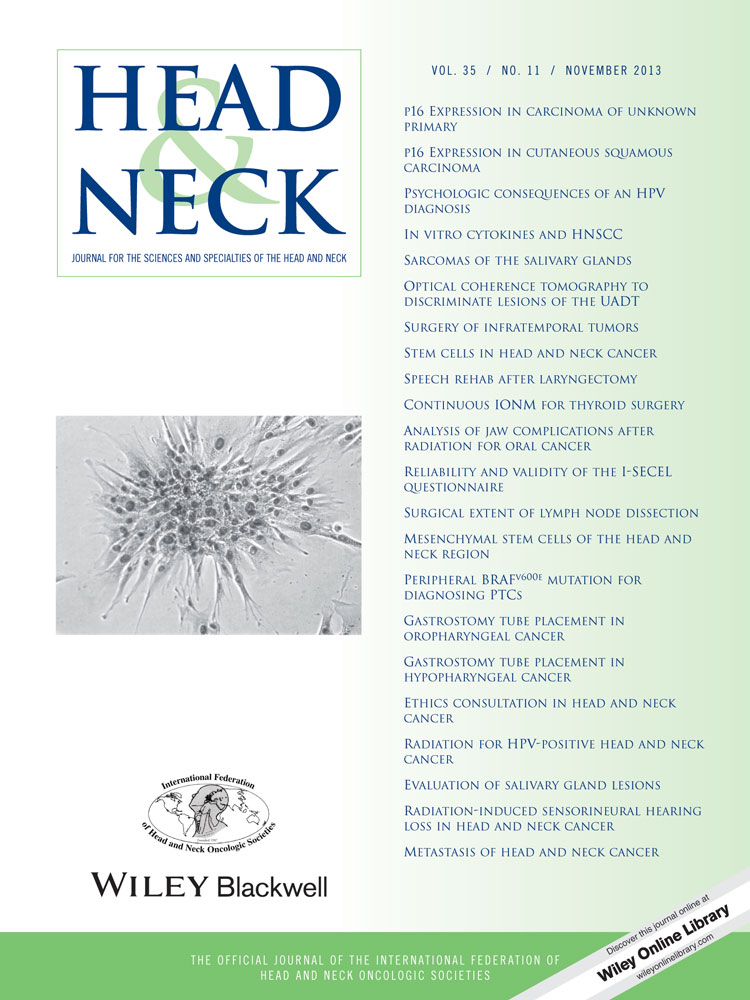Gastrostomy tube placement in patients with oropharyngeal carcinoma treated with radiotherapy or chemoradiotherapy: Factors affecting placement and dependence
Ehab Y. Hanna, MD, was recused from consideration of this manuscript.
This work was presented at the ASTRO Annual Meeting, Miami, Florida, October 2011.
Abstract
Background
Although many patients require nutritional support during radiotherapy or chemoradiotherapy for oropharyngeal cancer, little is known regarding the risk factors that predispose to gastrostomy tube (g-tube) placement and prolonged dependence, or the therapeutic interventions that may abrogate these effects.
Methods
We performed a retrospective medical chart review of patients who were treated for primary oropharyngeal cancer at a tertiary care center from 2003 to 2008. Patients who had a complete response at the primary site at 1-year posttreatment were included. G-tube placement and dependence ≥6 months were evaluated in relationship to site and stage of primary tumor, baseline characteristics, treatment type, smoking status, and swallowing intervention.
Results
We evaluated 474 patients (79%) with oropharyngeal cancer; 215 patients (40%) had concurrent chemotherapy, 73 patients (15%) had induction chemotherapy, and 69 patients (15%) had induction chemotherapy followed by concurrent chemotherapy. Two hundred ninety-three patients (62%) received g-tubes, of which 238 (81%) received the g-tube during radiation. At 1-year follow-up, 41 patients (9%) remained dependent on enteral feedings. Placement of g-tubes and prolonged g-tube dependence were significantly more likely in patients with T3 to 4 tumors (p < .001), baseline self-reported dysphagia (p < .001), odynophagia (p < .001), >10% baseline weight loss (p < .001), and in those treated with concurrent chemoradiotherapy. Patients who reported adherence to exercises had significantly lower rates of g-tube placement (p < .001), and duration of dependence was significantly shorter in those who reported adherence to swallowing exercises (p < .001).
Conclusion
Almost 40% of patients with oropharyngeal cancer treated with nonsurgical organ preservation modalities may avoid feeding tube placement. Factors that predispose to g-tube placement and prolonged dependence include T3 to T4 tumors, concurrent chemotherapy, current smoking status, and baseline swallowing dysfunction or weight loss. Adherence to an aggressive swallowing regimen may reduce long-term dependence on enteral nutrition and limit the rate of g-tube placement overall. © 2013 Wiley Periodicals, Inc. Head Neck, 35: 1634–1640, 2013




